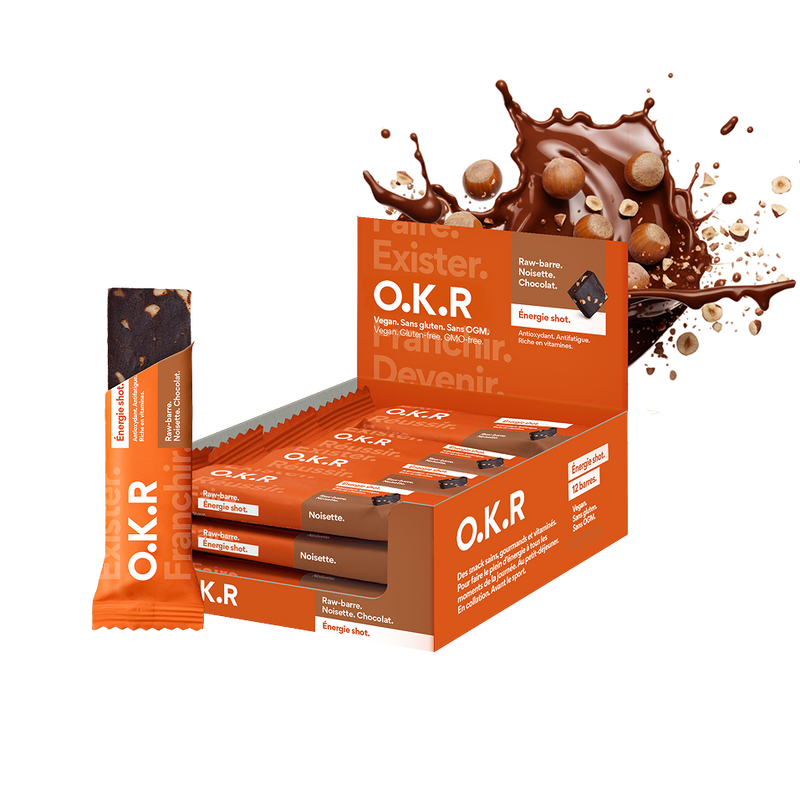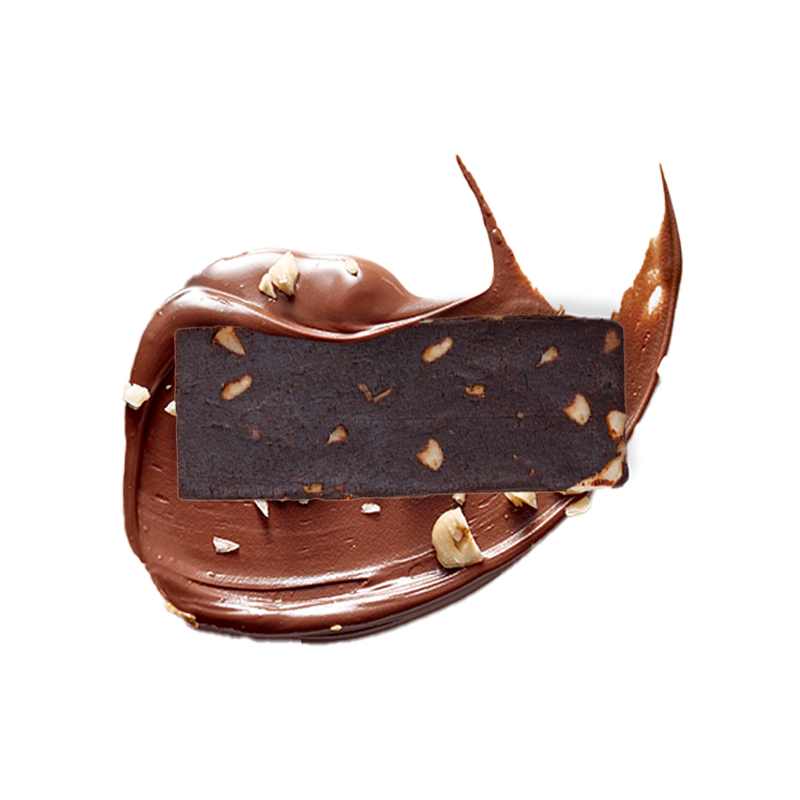Stay in shape this summer and stock up on vitamin D.
At OKR, each meal provides you with nearly a third of your recommended daily intake of vitamin D. In the Light range, which is lower in calories, our meal bars provide you with 20% of your daily requirement and our meal drinks provide you with more than a third of your vitamin D requirement.
What is vitamin D?
Vitamin D, or calciferol, is a fat-soluble vitamin, meaning it is soluble in fats and oils and stored by the body. To best absorb the vitamin D present in food, it is recommended to combine it with quality fats. There are two types of vitamin D:
- vitamin D2 or ergocalciferol, which is found mainly in plants.
- Vitamin D3 or cholecalciferol from animal sources. This is also the form in which our skin synthesizes it when we are exposed to the sun.
These two vitamin forms have similar roles and effects, with the only difference being that vitamin D3 is better absorbed by the body. But how is it that the sun can be the source of vitamin D production? It's quite simple. The skin synthesizes a molecule (7-dehydrocholesterol) that will be used to form vitamin D. Upon contact with the sun's ultraviolet rays, its structure will be modified into an intermediate form: provitamin D. Provitamin D will then be transported through the liver and then the kidneys, which will transform it into active vitamin D.
There's no need to spend 3 hours in direct sunlight to build up your vitamin D reserves. Exposing your arms and face to the sun for 10 to 15 minutes a day is enough to last all winter! Don't forget to protect yourself with sunscreen to prevent any skin diseases (e.g., skin cancer, spots, etc.). All the vitamin D synthesized during the summer is stored in the liver, muscles, and adipose tissue (fats) and will be used as needed during the rest of the year.
Foods rich in vitamin D.
Vitamin D can be found in animal products and some plants. This vitamin can be synthesized by our skin under the influence of the sun's ultraviolet rays, but it is also present in many everyday foods.
Animal sources.
Foods rich in vitamin D3 include the famous cod liver oil (250 micrograms per 100g) but also oily fish (salmon, herring, mackerel, sardines, etc.), dairy products and egg yolks.
Plant sources.
On the plant side, mushrooms are the main source of vitamin D2 with approximately 3.9 micrograms per 100g. This is why people following a vegetarian or vegan diet are advised to use a vitamin D supplement. In the case of vitamin D supplementation, it is recommended to take vitamin D3 in liquid form for better assimilation. Since the body is able to store it, it is not necessary to take a daily dose; a weekly or monthly intake is sufficient. We advise you to consult your doctor who will recommend a supplement adapted to your needs. At OKR, each meal provides you with 33% of your recommended daily intake of vitamin D.
The role of vitamin D in the body.
Vitamin D plays an essential role in the body. Its main function is to maintain a good concentration of calcium and phosphorus in the blood by facilitating their absorption from the intestine and reducing their elimination by the kidneys (via urine). Vitamin D's role is to maintain calcium and phosphorus in our body in order to ensure:
- good mineralization of the skeleton by facilitating the fixation of calcium on bones, cartilage and teeth.
Better blood sugar stability by improving the effects of insulin. It is important to have stable blood sugar levels that vary as little as possible. This helps prevent fatigue and hunger pangs (and therefore snacking).
How much vitamin D do you need?
Today, 80% of the French population is deficient in vitamin D due to a lack of exposure to sunlight or an unbalanced and insufficiently varied diet. The daily intake recommended by ANSES is 15 micrograms/day from the age of one, with a maximum daily dose of 100 micrograms/day.
Vitamin D deficiency.
A vitamin D deficiency can lead to osteoporosis (= bone demineralization) in adults or rickets (= bone mineral deficiency) in children. People at risk include children, the elderly, people who rarely expose themselves to the sun, overweight people, and vegans. However, overconsumption of vitamin D can also have adverse effects on the body. Symptoms of excess vitamin D can include nausea, vomiting, kidney stones, digestive problems, anorexia, etc.
The most common questions about vitamin D.
Why combine vitamin D and K?
Vitamins D and K share a common role: the binding of calcium to bones. The combination of these two vitamins ensures optimal binding of calcium to your bones.
When to take a vitamin D supplement?
Vitamin D supplementation is useful in certain cases. For example, during the winter when there is less sunlight, for people who live in cities with more polluted air that blocks out solar radiation, or for people with dark skin because it absorbs less ultraviolet rays. However, overconsumption of vitamin D can lead to symptoms such as headaches, vomiting, or dehydration. It is therefore important to seek advice from your doctor for more information (on dosage, for example).
Does vitamin D make you tan?
Unfortunately, no, vitamin D does not cause tanning. However, tanned skin may absorb this vitamin less well because this type of skin blocks the sun's rays.
In summary.
There are two types of vitamin D: vitamin D2 and vitamin D3. Dietary sources of vitamin D include mushrooms for vitamin D, and oily fish, dairy products, and egg yolks for vitamin D3. Vitamin D3 is also synthesized by the skin when exposed to the sun's ultraviolet rays. The recommended daily intake is 15 micrograms/day. Risks of vitamin D deficiency include osteoporosis and rickets.













